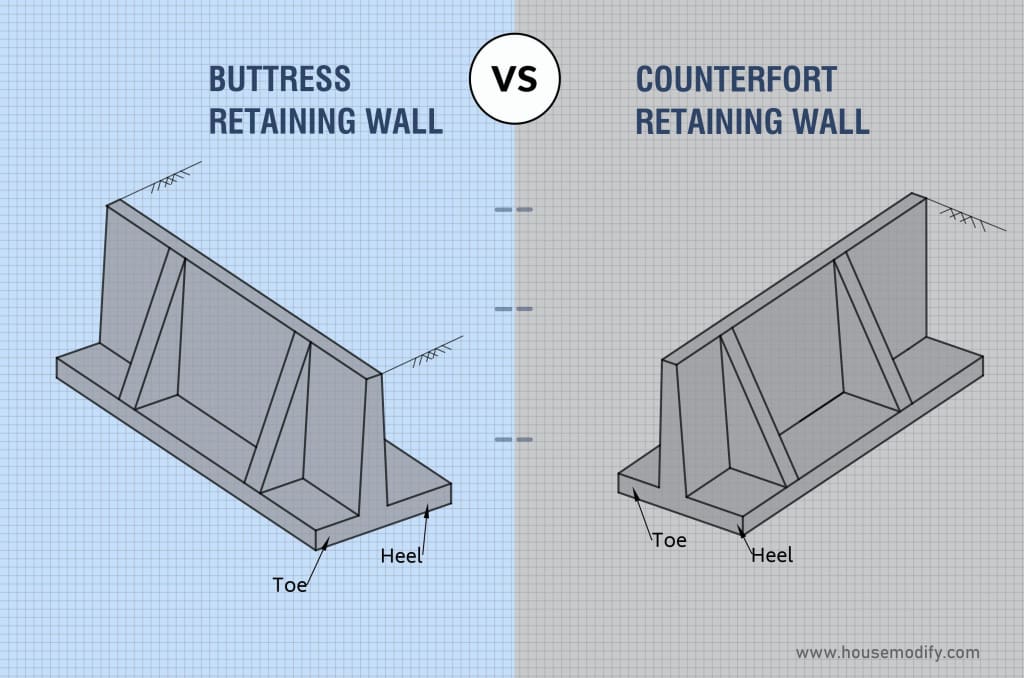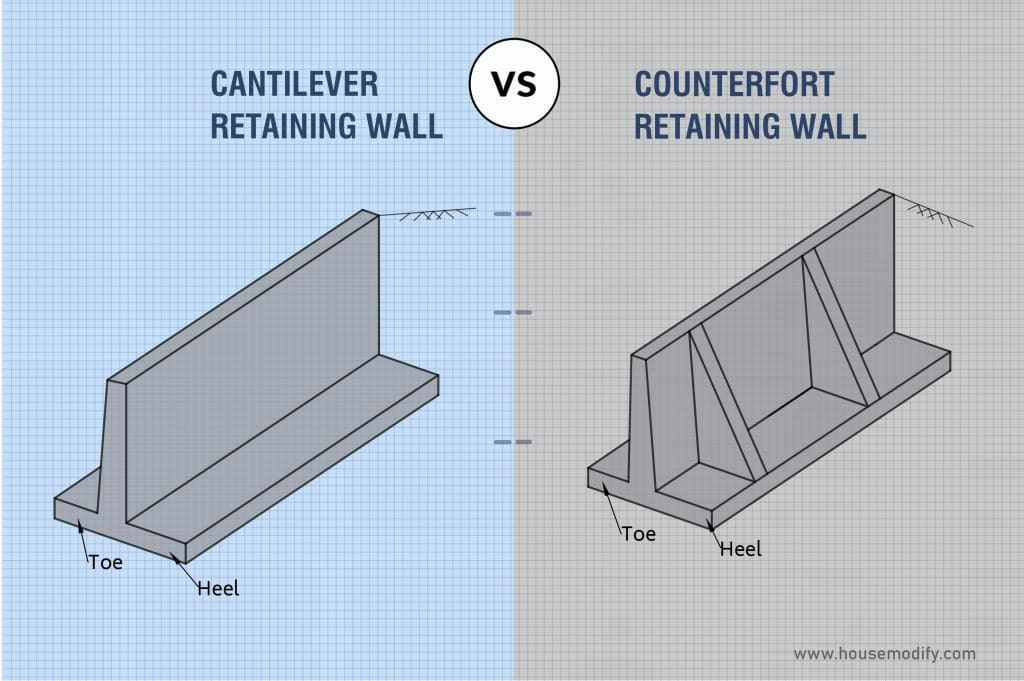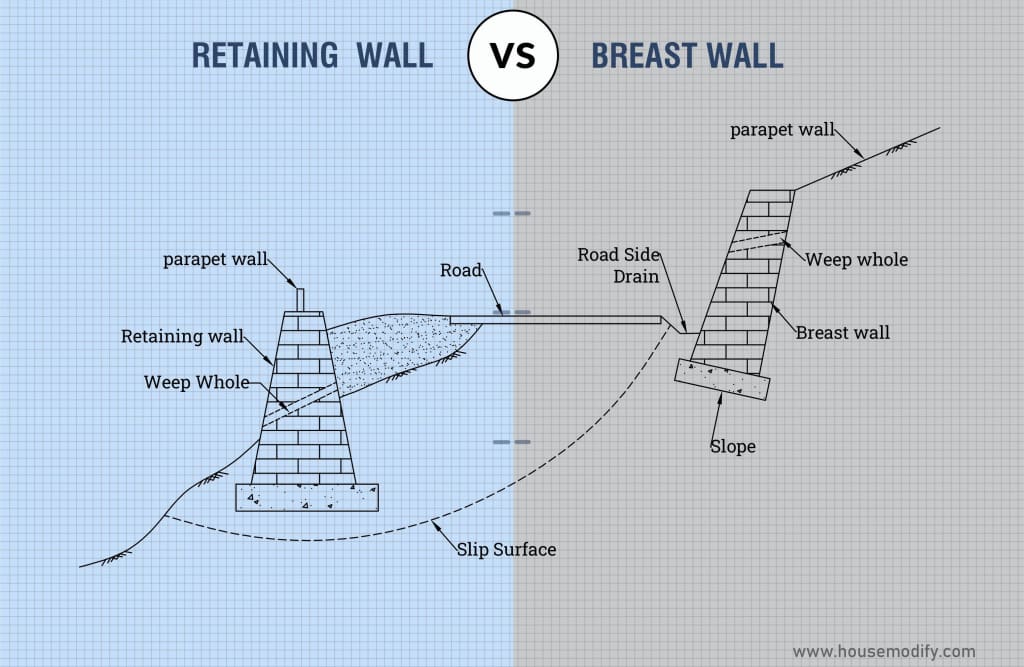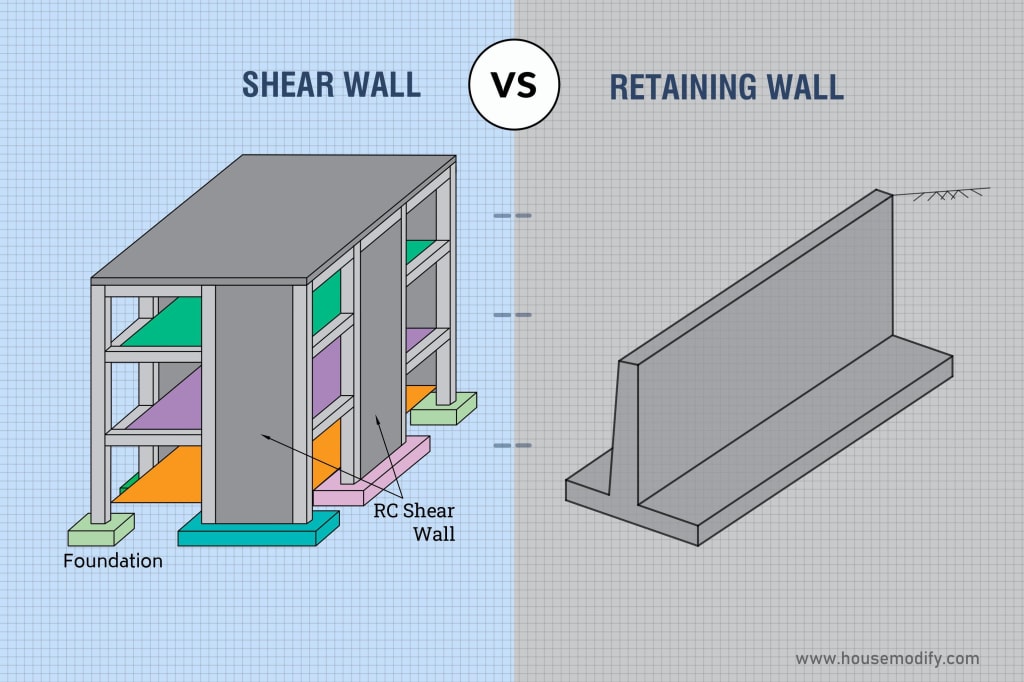In the construction and landscaping areas, the “normal wall” and “retaining wall” are frequently used, but how do they differ?
A retaining wall is a strong structure built to hold up a hill, slope, or mound of earth, while a normal wall is used to separate areas.
Unlike normal walls, retaining walls receive pressure horizontally rather than vertically as the weight of the earth behind the wall and they must adhere to high construction standards.
These two types of walls work differently and solve various problems.
In this article, we will check some significant differences between the retaining walls and the normal walls in terms of design, efficiency and use.
Retaining Wall Vs Normal Wall:
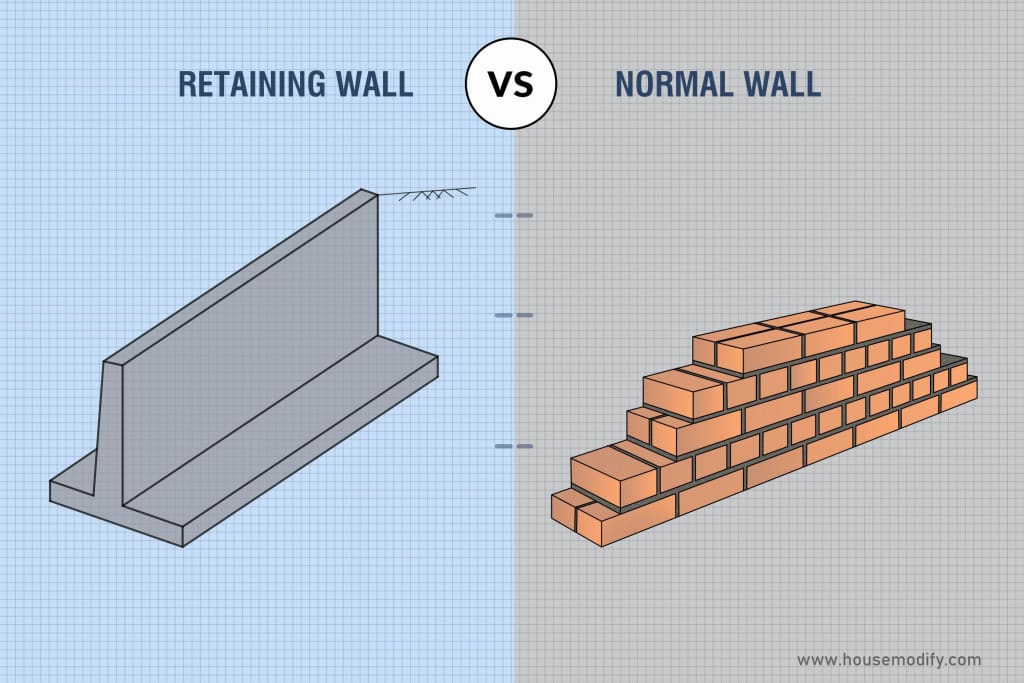
What is a Normal Wall?
The normal wall is a basic element of the architecture, especially the interior.
They usually support the functional aspects of the architecture; However, they can also be linked to thermal insulation, soundproofing and aesthetics.
The interior walls can be made of wood and drywall, while the exterior walls can be made of bricks and concrete blocks.
In other thoughts, the type of construction and its purpose determine the selection of materials.

Types of normal walls:
1. Load bearing walls:
A load-bearing wall supports the building.
The weight of the structure is supported and stabilized by floors and roofs.
2. Non-load bearings Walls:
The wall that cannot support the weight of the building is called a non-structural wall.
It builds private areas or rooms in a place.
The walls are made from mild steel, wood, or drywall.
What is a Retaining Wall?
The retaining wall is used in landscaping or working with soil or slope terrain.
The idea of maintaining the walls to stop the incense of the soil.
The walls must be maintained to maintain the stability of the soil in a sloping garden and to stop the land from drowning or slipping.
They are crucial in producing uneven terrain that minimizes rainwater erosion and creates functional terraces on hills.

Types of Retaining Walls:
1. Gravity Retaining Wall:
The pressure exerted by the backfill soil is counteracted through gravity retaining walls.
It is usually made of stern stuff, such as stone and concrete.
2. Concrete Gravity Walls:
Retaining walls are frequently made of concrete gravity walls.
They are vital and can be bent in many styles and surfaces, giving suitability for use & purely aesthetic purposes.
3. Stone Gravity Wall:
Stone gravity walls have a very appealing natural and rustic appearance.
It serves landscaping purposes as they help establish attractive steps or garden areas.
4. Cantilever Retaining Wall:
The cross-section of cantilever retaining walls is typically a reinforced concrete slab that obtrudes horizontally from its base.
The weight of the walls can neutralize the load from the retained materials.
5. Inverted T-Shape Cantilever Walls:
Inverted T-shape cantilever walls offer more significant support due to their broad base.
Highway construction and tall retaining wall applications often employ them.
6. L-Shape Cantilever Wall:
Where space is limited can be handled by using L-shape cantilever walls.
This enables them to have lesser thickness of their cross-sections and robust structures.
7. Sheet Pile Retaining Wall:
The sheet pile retaining walls are usually made using steel or PVC sections that lock together and are fixed on the ground.
They are commonly used in waterside applications, such as seawalls.
8. Reinforced Soil Retaining Wall:
Reinforced soil retaining walls utilize ground as fill materials with some incorporated reinforcement elements, which create firmness.
Such walls are portable and may be employed in many areas of work.
9. Geogrid-Reinforced Wall:
The load-bearing capacity of the soil increases by creating a framework within geogrid walls.
This means more steep walls and cheaper buildings.
10. Mechanically Stabilized Earth (MSE) Wall:
MSE walls consist of granular fill compacted between sheets of geogrid reinforcement.
These are highly stable and can be used in bridge abutments and sizeable retaining wall structures.
What is the Difference between Normal Wall and Retaining Wall?
This table shows the key difference between normal walls and retaining walls to help explain their various qualities and applications.
| Feature | Normal Wall | Retaining Wall |
|---|---|---|
| Purpose | The normal wall divides areas, provides privacy, and separates structures. | The retaining wall resists lateral forces caused by soil backfill, supports slopes, and prevents erosion. |
| Load-bearing | Load-bearing walls & non-load bearing walls. | Always, as they are designed to withstand lateral earth pressure and endure over time. |
| Construction materials | It can be made of various materials, including brick, concrete, and wood | It can be made of various materials, including concrete, steel, and gabion (mesh). |
| Design types | Load-bearing walls & non-load-bearing walls. | Gravity retaining walls, sheet pile retaining walls, and anchored retaining walls. |
| Advantages | Simplicity of construction and ease of maintenance. | Flexibility, especially when constructing in remote areas. |
| Disadvantages | This wall can be less expensive, depending on the material used. | This wall can be more expensive to build than a new structure. |
| Durability | Less durable. | More durable. |
| Strength | Less strong. | Stronger (5 times stronger than normal wall material). |
| Support Beams | Thinner. | Thicker. |
Also read: Difference between Breast Wall and Retaining Wall
Frequently Asked Questions (FAQs):
Can I use a normal wall outside?
These ordinary walls are not used outside the home because they cannot stand in front of the natural ingredients or soil pressure.
Does a drainage system need to be maintained?
Adequate drainage is required to prevent reserved walls and ensure stability.
Which material is best for the reserved wall?
The selection of materials is affected by parameters such as appearance, affordable ability, purpose, or engineering goals.
Are reserved walls suitable for small gardens?
It is possible to use reserved walls for terraces and settle the mountain small gardens; However, the size of the space should be considered.
What is the average lifespan of a retaining wall?
The average lifespan depends on the materials used, the level of construction work, as well as its maintenance.
Well-constructed can last for several decades.
Also read: Difference between Shear Wall and Retaining Wall
Conclusion:
The key differences between the normal wall and retaining wall in its purposes and designs.
Typical walls have been traditionally used for purposes of interior partitioning and decoration; however, retaining walls play a crucial role in maintaining soil and protecting against erosion outdoors.
Section Under: Retaining Walls

